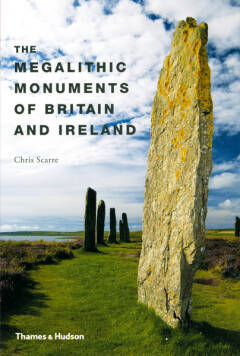
Je cadeautjes zeker op tijd in huis hebben voor de feestdagen? Kom langs in onze winkels en vind het perfecte geschenk!
- Afhalen na 1 uur in een winkel met voorraad
- Gratis thuislevering in België vanaf € 30
- Ruim aanbod met 7 miljoen producten
Je cadeautjes zeker op tijd in huis hebben voor de feestdagen? Kom langs in onze winkels en vind het perfecte geschenk!
- Afhalen na 1 uur in een winkel met voorraad
- Gratis thuislevering in België vanaf € 30
- Ruim aanbod met 7 miljoen producten
Zoeken
€ 18,45
+ 36 punten
Omschrijving
From Stonehenge to Newgrange, one of the richest arrays of megalithic monuments in Europe is found in Britain and Ireland. Using massive stone blocks, timber posts and mounds of earth or chalk, the people of these islands built great monuments from the beginning of the Neolithic and the arrival of pottery and farming some 6000 years ago down into the Bronze Age. The number and sheer diversity of these structures is astonishing. Stone circles and chambered tombs, burial mounds and earthwork enclosures, henges and cursus monuments, all belong to the same general category of monumental prehistoric architecture. Tombs, sanctuaries, places of cult and of memory: these Neolithic monuments had numerous functions in prehistoric societies. Transforming the lanscape, such grand structures must have represented for their communities a particular way of responding to changing social and symbolic needs, whether processing the dead, gathering for ceremonies, or embellishing locations that were of sacred significance. Organized by geographical area this authoritative overview is ideal for traveller and student alike.
Specificaties
Betrokkenen
- Auteur(s):
- Uitgeverij:
Inhoud
- Aantal bladzijden:
- 160
- Taal:
- Engels
Eigenschappen
- Productcode (EAN):
- 9780500286661
- Verschijningsdatum:
- 1/06/2007
- Uitvoering:
- Paperback
- Formaat:
- Trade paperback (VS)
- Afmetingen:
- 180 mm x 240 mm
- Gewicht:
- 503 g

Alleen bij Standaard Boekhandel
+ 36 punten op je klantenkaart van Standaard Boekhandel
Beoordelingen
We publiceren alleen reviews die voldoen aan de voorwaarden voor reviews. Bekijk onze voorwaarden voor reviews.









